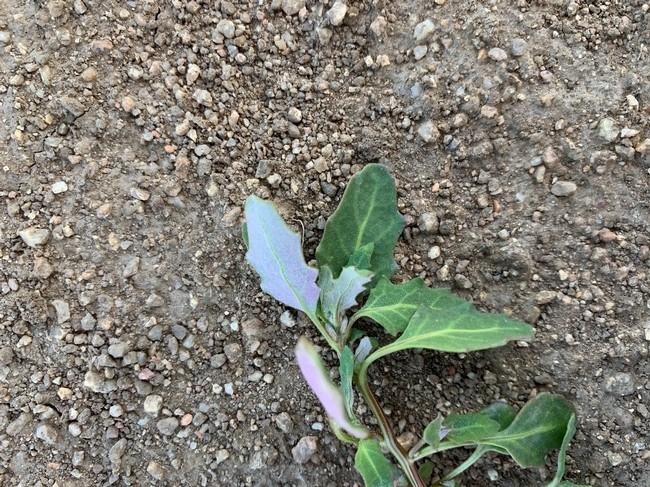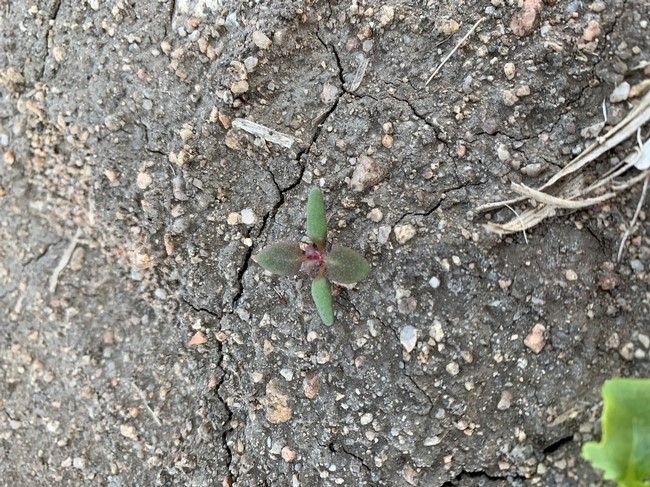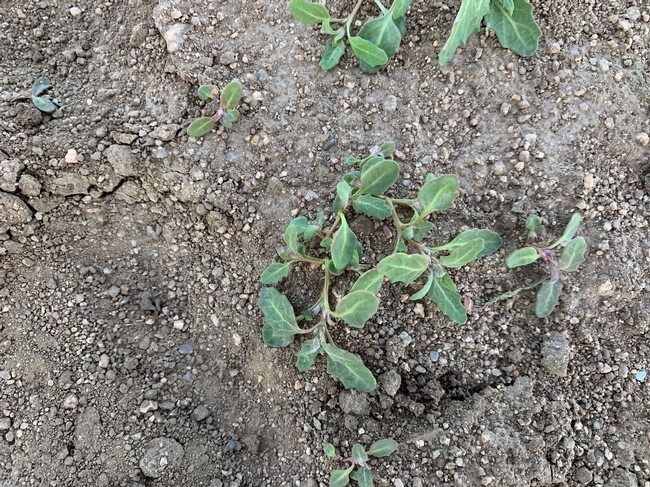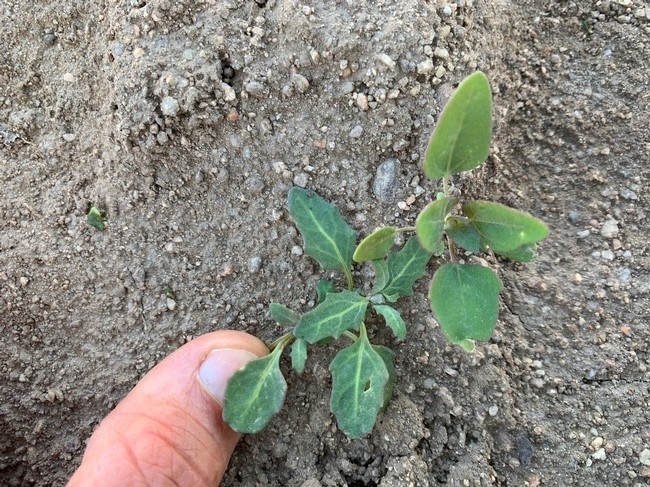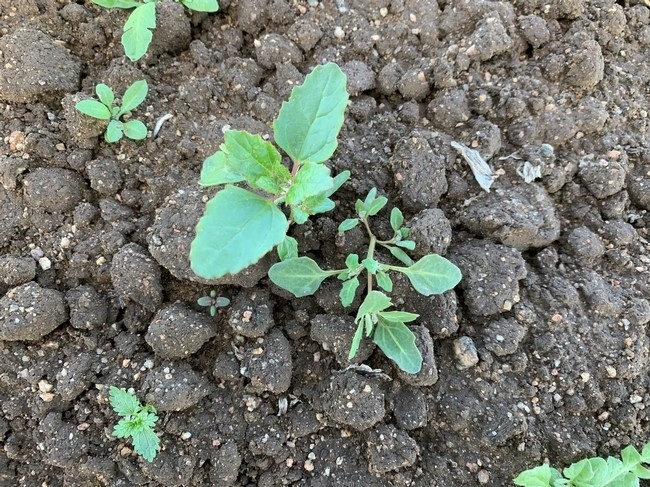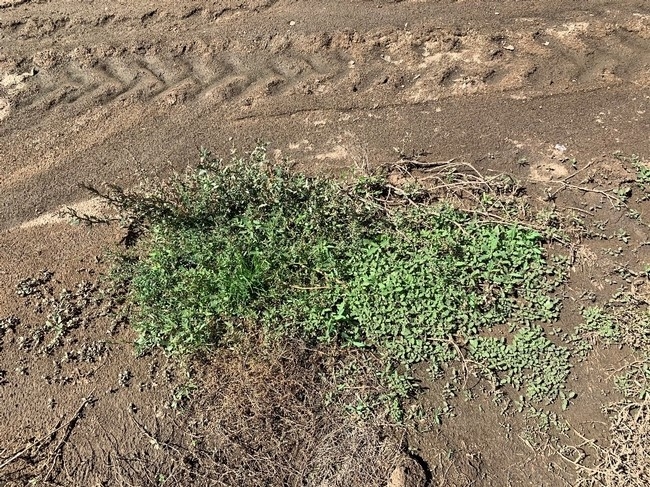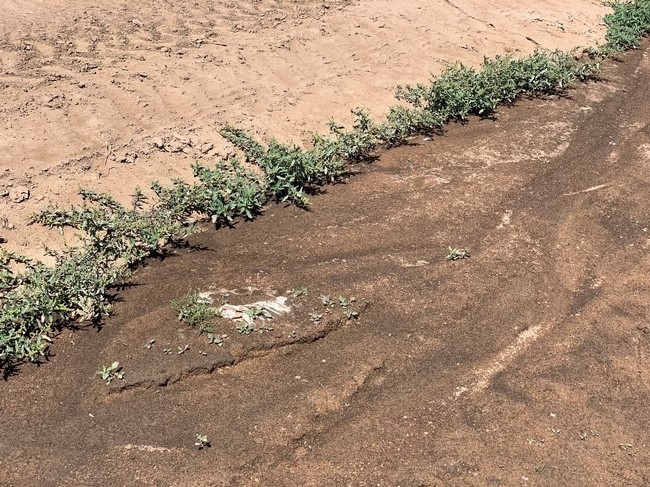Richard Smith is the University of California Cooperative Extension Monterey County Vegetable Crop Production and Weed Science Farm Advisor. He also covers Santa Cruz and San Benito counties.
Photo 1. Oakleaf goosefoot: above and lower leaf surfaces shown
Oakleaf goosefoot is closely related to lambsquarters (C. album) and nettleleaf goosefoot (C. murale). A variety of oakleaf goosefoot is native to eastern California (C. glaucum var. salina). The variety that we have here in the Salinas Valley is not the native, but rather the non-native variety C. glaucum var. glauca which is widely reported as a weed in many parts of the United States.
Photo 2. Oakleaf goosefoot seedling
Photo 3. Oakleaf goosefoot showing prostrate growth form and coarsely serrated leaves
Photo 4. Oakleaf goosefoot in comparison with lambsquarter seedling (on left).
Photo 5. Oakleaf goosefoot just below nettleleaf goosefoot seedling
Oakleaf goosefoot can inhabit vegetable production fields as well as the margins of fields and ditches (Photos 6-7). At this point, it appears to be susceptible to the same herbicides as the other Chenopodium species. In one trial, it was shown to be highly susceptible to the combination of Kerb and Prefar. That is the good news. The bad news is that it is spreading and is taking full advantage of opportunities along field edges to set great quantities of seed. At this point, the populations of this weed have increased to the point that several growers and PCA's have commented about it and have expressed concern for its growing populations. It is good to recognize this weed and address it as you would the other Chenopodium species.
Photo 6. Flush of oakleaf goosefoot seedlings and more mature plants in a ditch
Photo 7. Flush of oakleaf goosefoot growing along the edge of a ditch
